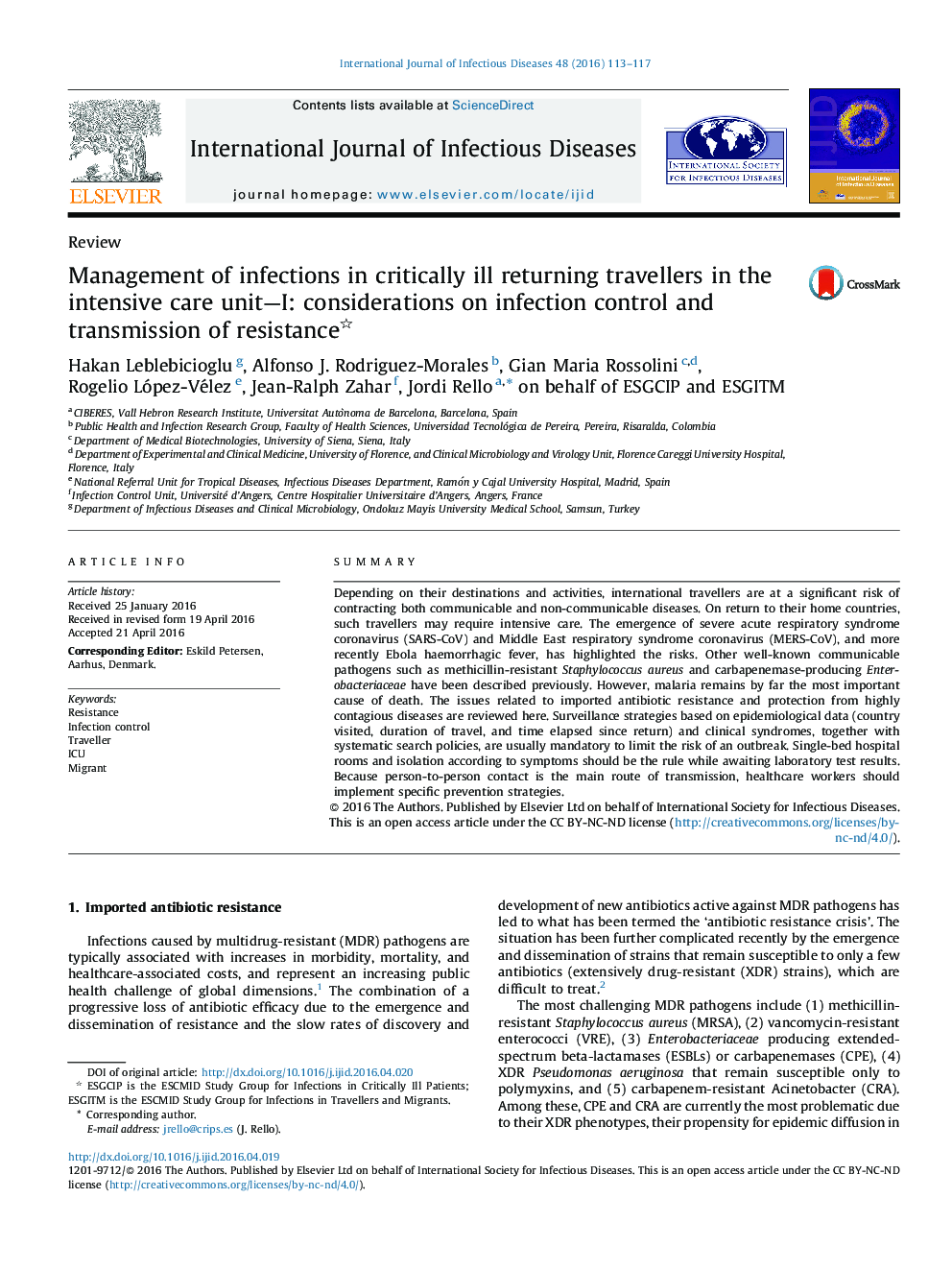| کد مقاله | کد نشریه | سال انتشار | مقاله انگلیسی | نسخه تمام متن |
|---|---|---|---|---|
| 3361715 | 1592046 | 2016 | 5 صفحه PDF | دانلود رایگان |
• Person-to-person transmission is the most important means of transmission.
• Malaria remains by far the most important cause of death.
• Surveillance strategies based on epidemiological data (country visited, duration of travel, and time elapsed since return) and clinical syndromes associated with a systematic search policy are usually mandatory to limit the risk of an outbreak.
• Hospitalization in a single-bed room and isolation according to symptoms should be the rule while awaiting laboratory test results.
SummaryDepending on their destinations and activities, international travellers are at a significant risk of contracting both communicable and non-communicable diseases. On return to their home countries, such travellers may require intensive care. The emergence of severe acute respiratory syndrome coronavirus (SARS-CoV) and Middle East respiratory syndrome coronavirus (MERS-CoV), and more recently Ebola haemorrhagic fever, has highlighted the risks. Other well-known communicable pathogens such as methicillin-resistant Staphylococcus aureus and carbapenemase-producing Enterobacteriaceae have been described previously. However, malaria remains by far the most important cause of death. The issues related to imported antibiotic resistance and protection from highly contagious diseases are reviewed here. Surveillance strategies based on epidemiological data (country visited, duration of travel, and time elapsed since return) and clinical syndromes, together with systematic search policies, are usually mandatory to limit the risk of an outbreak. Single-bed hospital rooms and isolation according to symptoms should be the rule while awaiting laboratory test results. Because person-to-person contact is the main route of transmission, healthcare workers should implement specific prevention strategies.
Journal: International Journal of Infectious Diseases - Volume 48, July 2016, Pages 113–117
